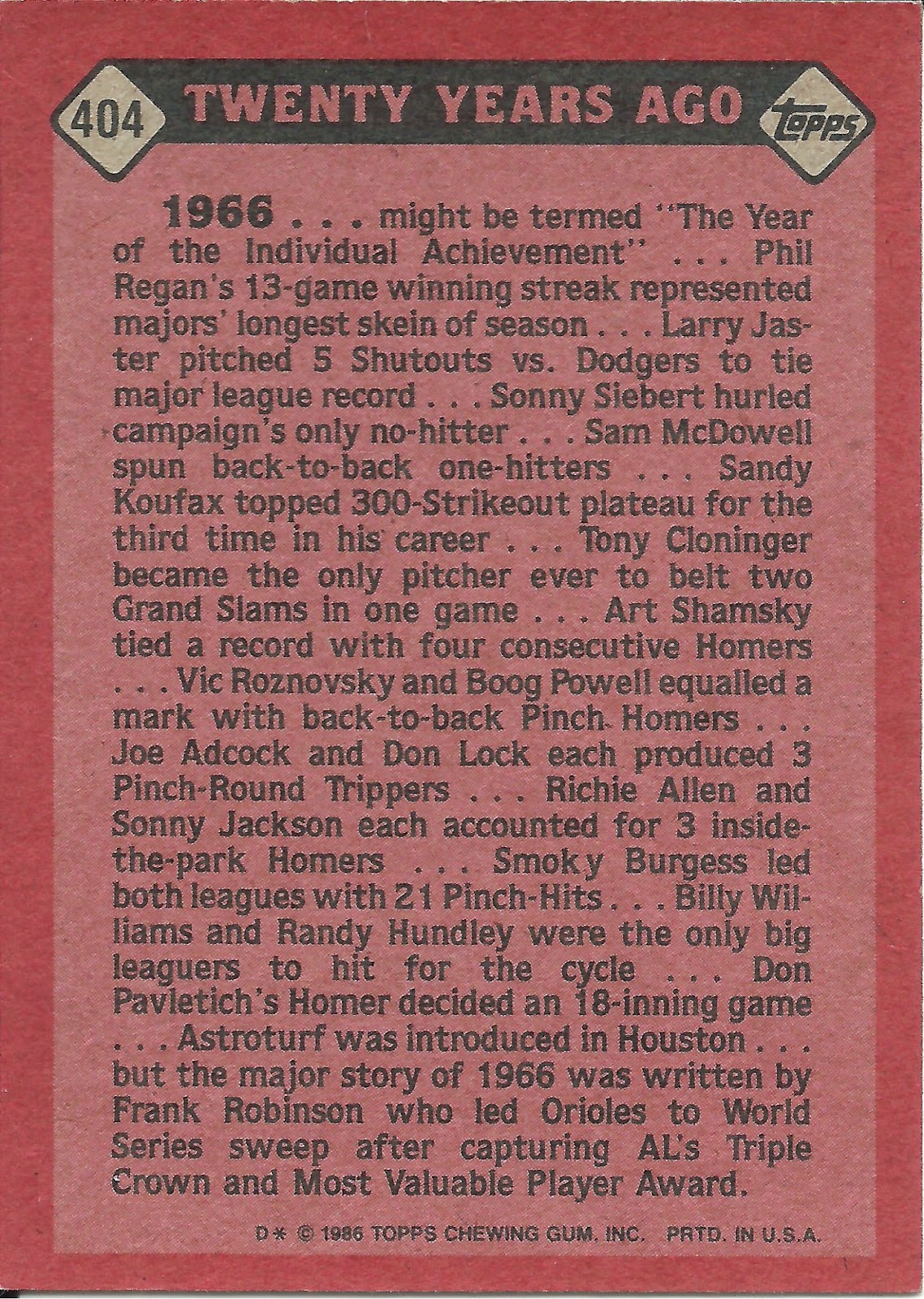Card thoughts: Terrible airbrush job on Robinson. Obviously a Reds uniform. For once, Topps picked the right player, though. Robinson was the last player to win the Triple Crown before Miguel Cabrera did it a couple of years ago (corrected in the comments: That would be Yaz).
Rear guard:
- Phil Regan was a great reliever in the 60s. All of those 13 wins came in relief, and he would go 14-1 in 1966, and also lead the league in saves.
- I've never heard of Larry Jaster, but strangely enough he only had 5 shutouts all year (which led the league), and all came against the Dodgers. He only won 35 games in his 7-year career, however.
- Sonny Siebert sounds like the leader of a garage band. He was a reliable, if unspectacular, starter for the Indians and Red Sox. 1966 was his best season.
- Sam McDowell, Siebert's teammate, was one of the early strikeout kings. Drinking did in his career.
- We all know about Sandy Koufax. He blew is arm out at age 30. 1966 was his last season. Since Koufax announced his retirement before Topps issued the 1967 set, there is no base card for him.
- Tony Cloninger is hit 5 home runs that season. As a pitcher, he was incredibly wild, leading the league in walks and wild pitches in 1966.
- Art Shamsky has one awesome name. Out of his 54 hits in 1966, almost half were home runs.
- Joe Adcock was a long time Braves first baseman who was playing his last season with the Angels when he hit those 3 dingers.
- Vic Roznovsky is most notable for his wavy blond hair. He generally was the third-string catcher on the Cubs and Orioles.
- Boog Powell was a longtime star first baseman for the Orioles. He was not a bench player normally, and hit 339 career home runs.
- Don Lock looks like a Batman villain.
- Richie Allen, also known as Dick, was known for his terrible temple, and unrealized potential. He had an incredible 1966 campaign, leading in slugging and OPS while hitting 40 home runs.
- Sonny Jackson appeared on a rookie card with Joe Morgan. He was a leadoff hitter in '66, and all 3 of his home runs were inside the park.
- Smoky Burgess is a famous pinch hitter who played for 18 seasons. He looks it on that card.









